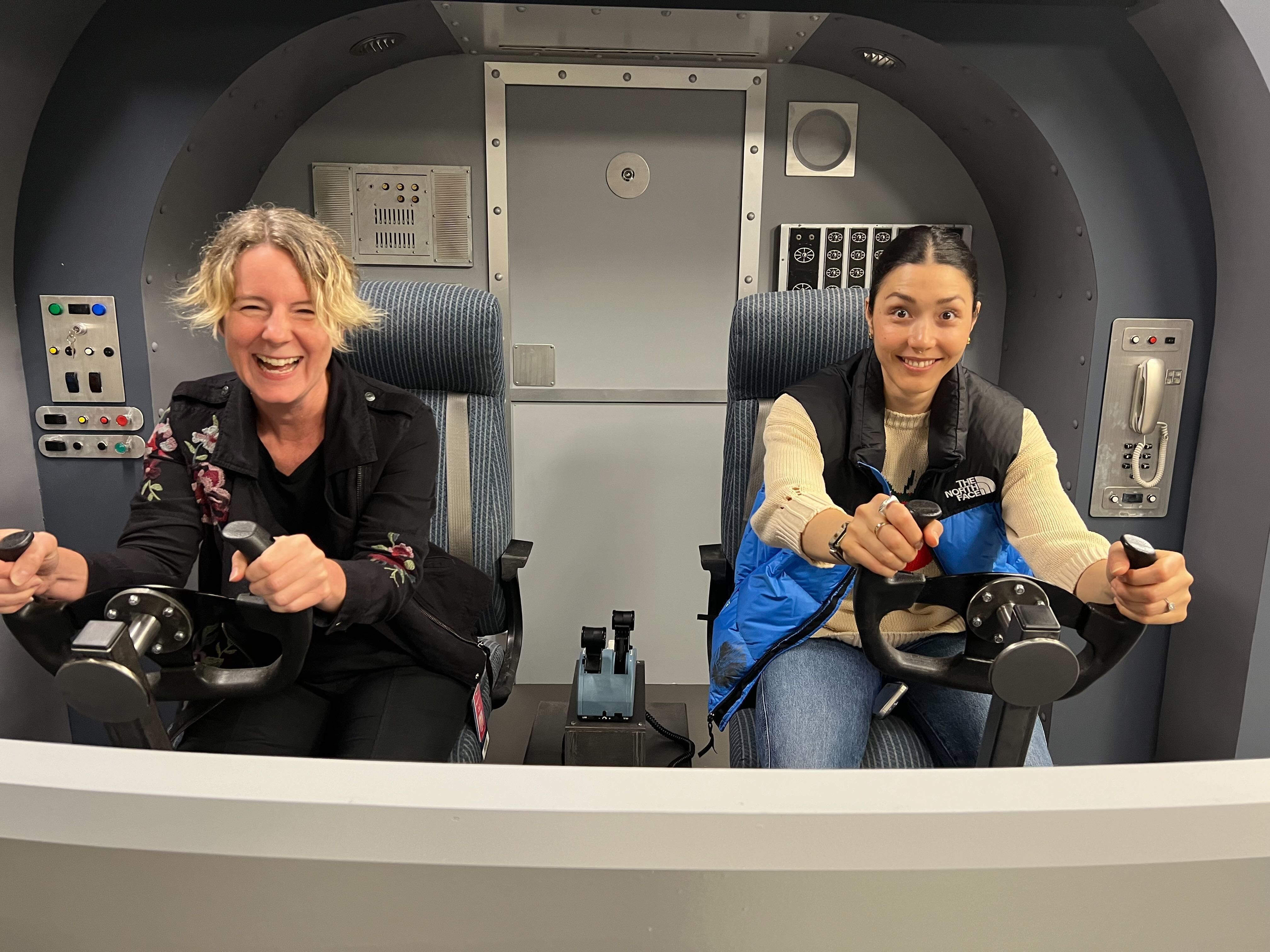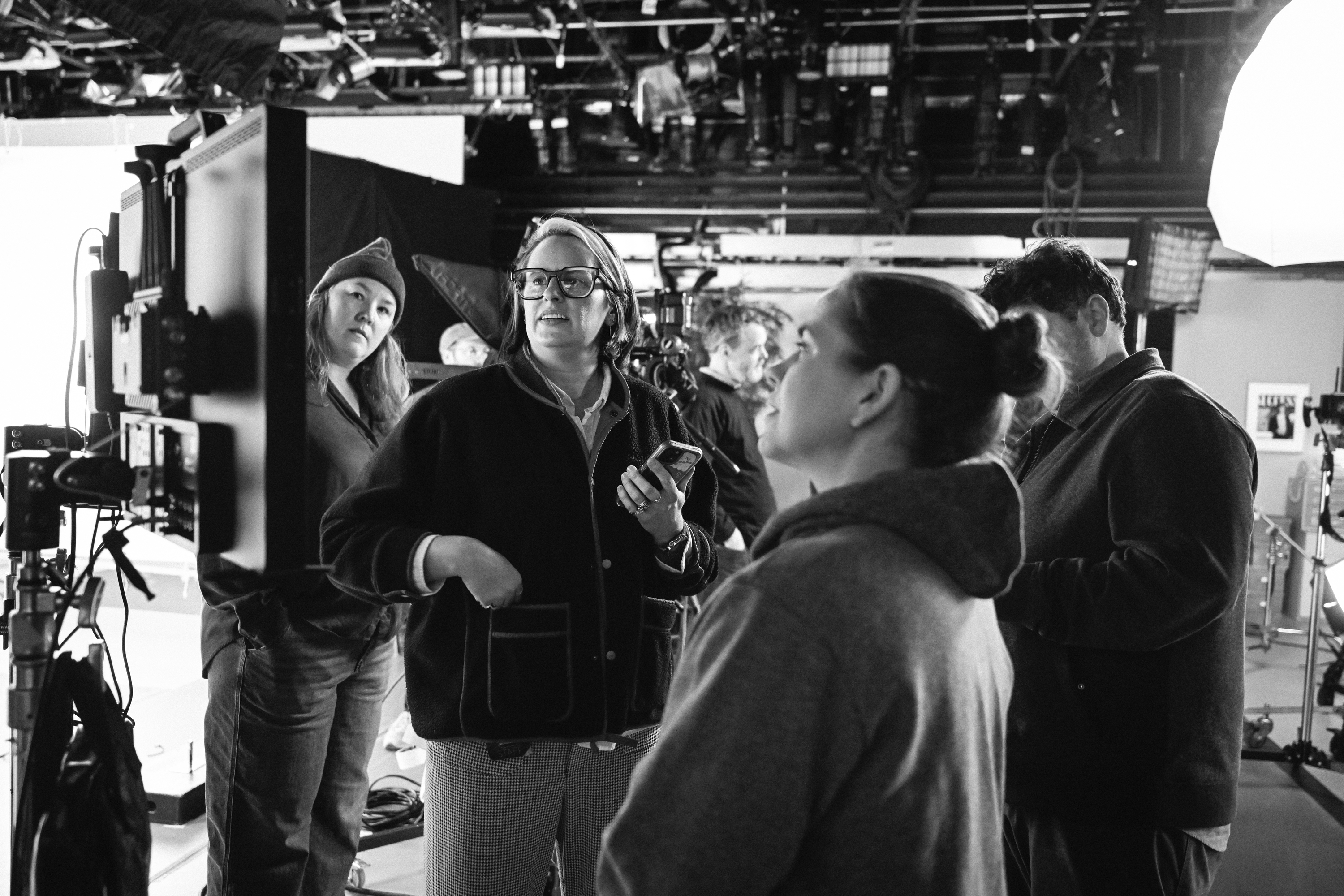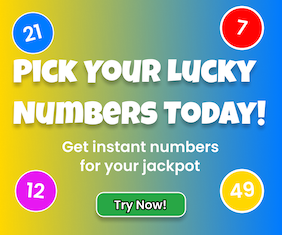There’s something infectiously fun, for both a creative team and for an audience, about the rush of putting together a show at the last minute, but almost nowhere on television is that kind of scrappy, last-minute, late-night energy the intended mode of operation. Almost.
Late night shows, because of their fast turnarounds and breaking news, have to have a little bit of “theater kid” energy built into them, even as they often are planning intricately produced sketches and segments for months in advance at the same time they’re scrambling to find Minecraft toys to throw into a novelty claw machine at the last minute. So it’s a good thing for “The Tonight Show Starring Jimmy Fallon” that it has two production designers with the relentlessly creative instincts and flexible problem-solving skills you get from indie theater.
IndieWire spoke to production designers Kelly Hanson and Heather Wolensky about their and their team’s work pulling “The Tonight Show Starring Jimmy Fallon” together and they both cited early career theater training as the thing that’s been most useful to them in pulling together a show that they think of as almost ‘televised vaudeville’ night after night.
“We are constantly working on several bits at once with different writers,” Hanson told IndieWire. “The challenges of the low-budget/understaffed downtown theater world helped me hone my skills as a creative problem solver. Considering the available resources becomes a necessary part of the design process and, for me, a rewarding puzzle to solve.”
“We both started on ‘Late Night with Jimmy Fallon’ with the freelancer mindset that we wouldn’t stay put… But here we are,” Wolensky added. “We are very lucky.”

Luck always has something to do with it, but so does extensive preparation. “The Tonight Show” has a whole games department that has 4-5 highly produced segments in development at any one time, doing testing on and off camera to find the right 7-minute of version of something that is easy to explain and grasp, as well as visually striking.
Hanson cited the “Human Claw Machine” as a game build that she and her team were able to throw a lot of love and detail into. What initially started as a Jimmy Fallon riff in a creative meeting necessitated a giant-sized pit of toys and a wire rig to safely move the contestants around as they attempt to be “human claw machines” and haul up the prizes while scrambling through the air.
“The first time we did it, figuring out the spatial relations to allow their bodies to become giant ‘claws’ in our tiny upstage space was a special challenge,” Hanson said.
In addition to determining exactly how many stuffed animals you need to fill a 6×12 foot tank on a quick turnaround, and how big a trough to make so that the game can last for over a minute, Hanson activated a special consultant to make sure the game was “A Minecraft Movie” specific. “I texted my 11-year-old son, who is a Minecraft fanatic, and he sent me a list of items we should include in the tank,” Hanson said. “He also suggested that we include a pig head crown as a tribute to Technoblade, a beloved young YouTuber who had died of cancer a few years ago. We got approval from the show, and his tribute was widely noticed online! It was so heartwarming and a really lovely collaboration with my son.”
Collaboration is the name for all of the games that “The Tonight Show” production design team takes on, as well as sketches and desk bits. A “JORTS” music video required all the props to be designed and hand-drawn as 2D objects that interact with 3D people. Sometimes, however, the show’s art team has to improvise. Hanson and Wolensky will get a heads-up at 10:30 on the day of, if there’s a timely sketch that requires their attention. Even with a prop warehouse standing by at the ready (for 3D objects, at least), that’s not a lot of time.
“We have a giant warehouse in Long Island and a truck that runs every day. Sometimes, though, that is just simply not fast enough. Our prop teams are masterful in finding things in a pinch — whether it’s a giant live fish or a freestanding toilet,” Wolensky said. “You name it and they have probably put it in the back of a taxi.”

Over the years, the show has made its studio more responsive, replacing the printed cityscape backdrop behind Fallon’s desk with an LED wall — a bit of risk with studio space at a premium, as LED walls usually need a lot of space to work well on camera. But the production team figured out a way to make it work.
“We now have a video surface that allows us to change the backdrop for desk games and sketches, giving us a different look for popular desk bits like ‘Hey Robot’ and ‘Go On, Git.’ Encouraged by this success, we followed by adding video behind Higgins, our announcer, as well as on our “header” surfaces throughout the studio. These additions, in combination with our new and improved 13’x24’ mobile upstage video wall, have set us up with a dynamic space that can be transformed quickly,” Hanson said.
But it’s ultimately Hanson and Wolensky and their team that do the transforming. “Our art department of six is comprised of incredible people, and between us, we are able to seamlessly flow and keep up with the day-to-day, while supporting each other. Each person on the team is essential. And then of course, last but not least, [our] scenics, props, crew, and vendors who are always ready to jump in feet first. They aren’t scared of any challenge, big or small. They make this job truly the best around,” Wolensky said.



